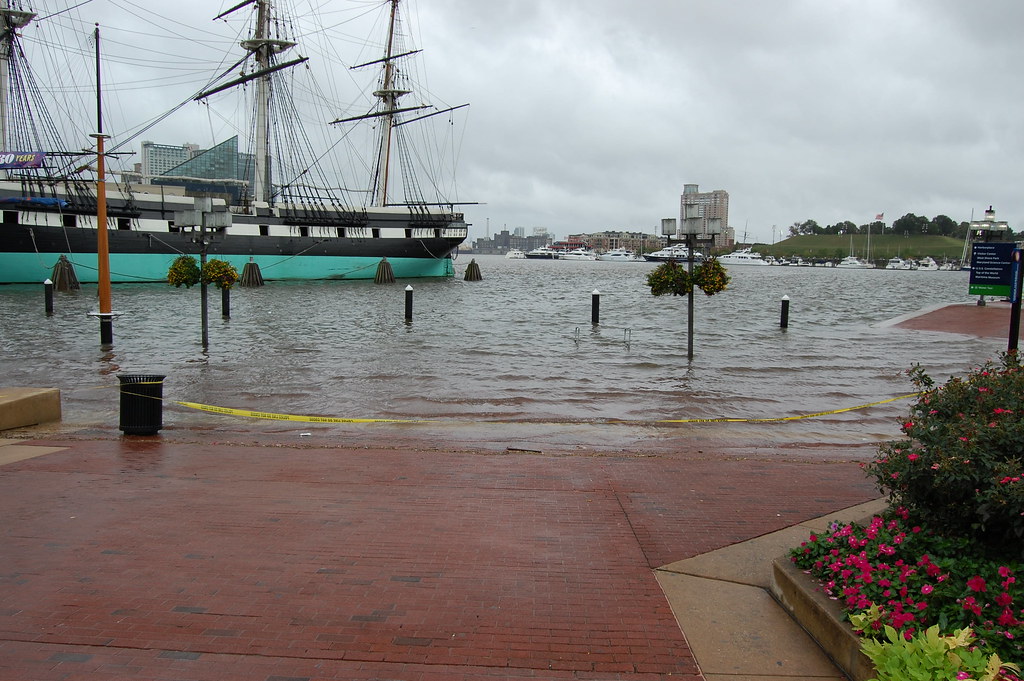
October 25, 2021
The Johns Hopkins University Flood Lab is a partnership between Johns Hopkins 21st Century Cities Initiative (21CC) and the First Street Foundation that enables Hopkins faculty and 21CC affiliated researchers to use new data on the past, present, and future flood risk for every home and property in the US. The data include a variety of risk probabilities and flood depths for storm surge, fluvial, and pluvial flooding.
Learn more about the model and the data available through First Street’s API.
Researchers interested in using this data should reach out to Mac McComas, [email protected], with a brief description of their research interests.
Johns Hopkins researchers are using the data to ask the following questions:
How does changing flood risk influence mortgage lenders’ decisions to hold loans in portfolio or sell them to Fannie Mae and Freddie Mac?
Recent evidence suggests an increasing risk of natural disasters of the magnitude of Hurricanes Katrina and Sandy. Concurrently, the number and volume of flood insurance policies has been declining since 2008. Hence, households who have purchased a house in coastal areas may be at increasing risk of defaulting on their mortgage. Commercial banks have the ability to screen and price mortgages for flood risk. Banks also retain the option to securitize some of these loans. In particular, bank lenders may have an incentive to sell their worse flood risk to the two main agency securitizers, Fannie Mae and Freddie Mac. Such agency securitizers follow observable rules set by the Federal Housing Finance Agency (FHFA) for the purchase of securitized mortgages.
Methods
In this project, Dr. Amine Ouazad and Dr. Matthew Kahn will use one distinct FHFA rule, the conforming loan limit, to measure the impact of flood risk on securitization volumes. In a recent paper, the researchers found that lenders’ sell significantly more mortgages with loan amounts right below the conforming loan limit after a natural disaster that caused more than a billion dollars in damages. In this analysis, the researchers will use data from the First Street Foundation Flood Model to examine how flood risk more broadly (rather than just “billion-dollar events”) influences lenders’ securitization behavior.
What is the aggregate effect of climate risk on the stability of the US financial sector? How do banking institutions perform under various climate scenarios?
With about 100 billion dollars of mortgages originated in coastal neighborhoods every year, financial institutions hold a substantial stock of at-risk mortgages with maturities up to 30 years. Increasing climate risk may lead to a rising number of delinquencies and defaults, affecting banks’ net income, but also causing balance sheet write-offs in the value of mortgage backed securities and in the equity value exposed to climate shocks. Hence climate shocks may propagate through both fire sales and through asset-liability linkages. In this project, the research team will estimate the aggregate effect of climate risk on the US financial sector’s fragility, designing a Dodd-Frank style climate stress test.
Methods
The research team will use data from the Home Mortgage Disclosure Act (HMDA), the First Street Foundation Flood Model, and data on banks’ branch networks and national balance sheets (collected by the Federal Financial Examination Council (FFIEC)) to examine how much flood risk financial institutions across the country are exposed to and may be able to withstand.
The HMDA and FFIEC data can be combined to generate statistics including: the liquidity of the financial institution (defined as the ratio of cash and securities to total assets), the volume of mortgages held by the financial institution, the amount of recourse on mortgages sold by the institution, and the volume of mortgage backed securities sold by the institution.
Does the political power of Congressional representatives influence the prioritization and funding of federally-funded flood risk reduction projects?
Flood mitigation efforts depend crucially on the U.S. Army Corps of Engineers’ (USACE) seawalls, levees, beach nourishment, and other investments. The location, scale, and nature of such mitigation efforts is determined by Congress. The focus of this project is on understanding the decision process of high-ranking members of Congressional committees. Committee members balance the interests of voters. They may also be influenced by real estate developers attempting to set the agenda on funding decisions through political donations and other lobbying efforts. A key empirical question is to understand whether Congressional committee members respond to such lobbying efforts by allocating USACE funding to protect land and structures owned by developers rather than protect areas at the greatest risk of flooding.
Methods
n this project, Dr. Luis Quintero and Dr. Matthew Kahn are using data from the First Street Foundation Flood Model to control for differences in flood risk among Congressional districts and measure political power by representatives’ years in Congress, committee chairmanships, and other indicators. The influence of real estate developers will be measured by money spent on political donations and lobbying efforts.
Controlling for a wide range of variables, the research team aims to isolate the effects of the political power of Congressional representatives and the lobbying efforts of real estate developers to determine how influential these factors are in how USACE projects are prioritized and funded

